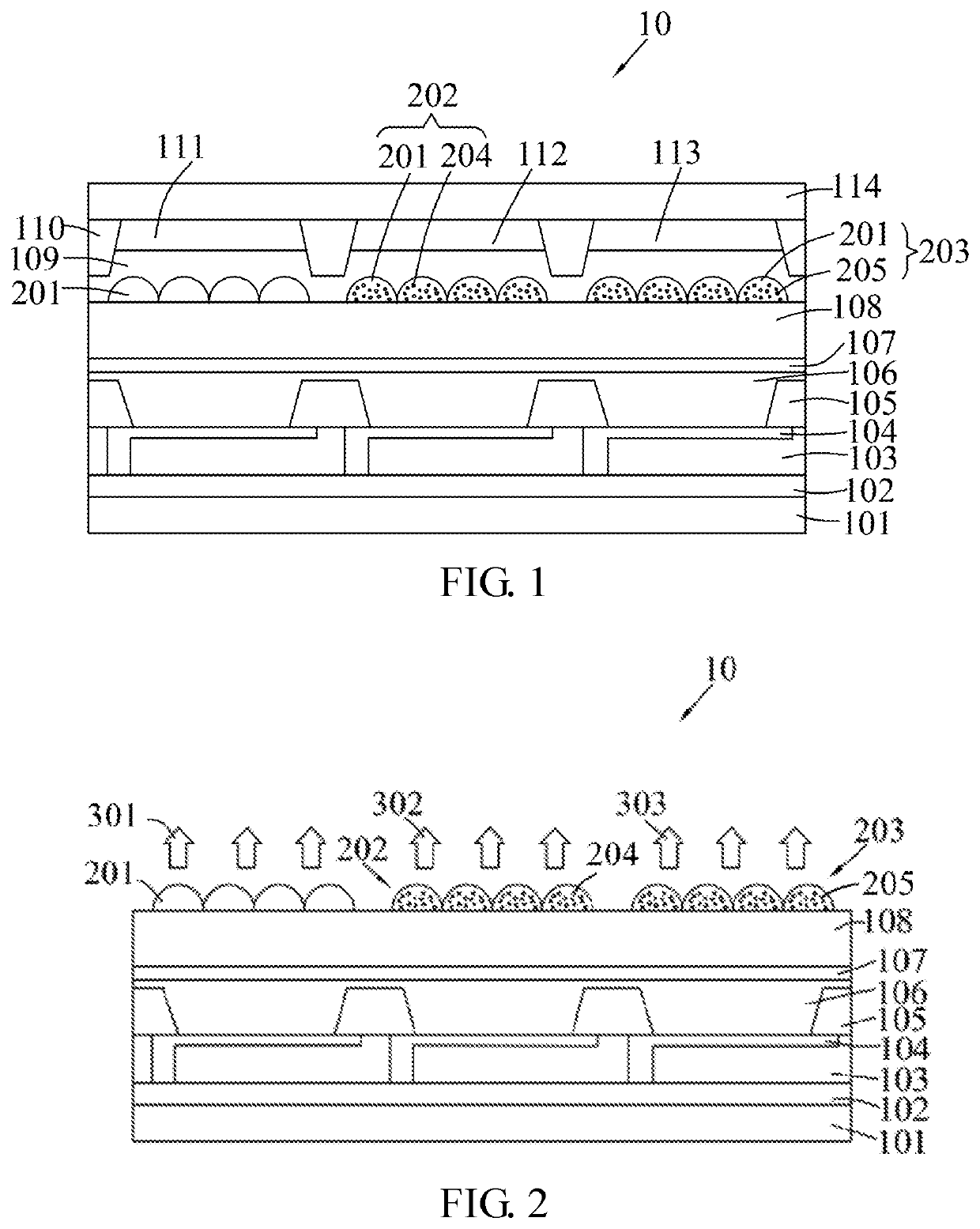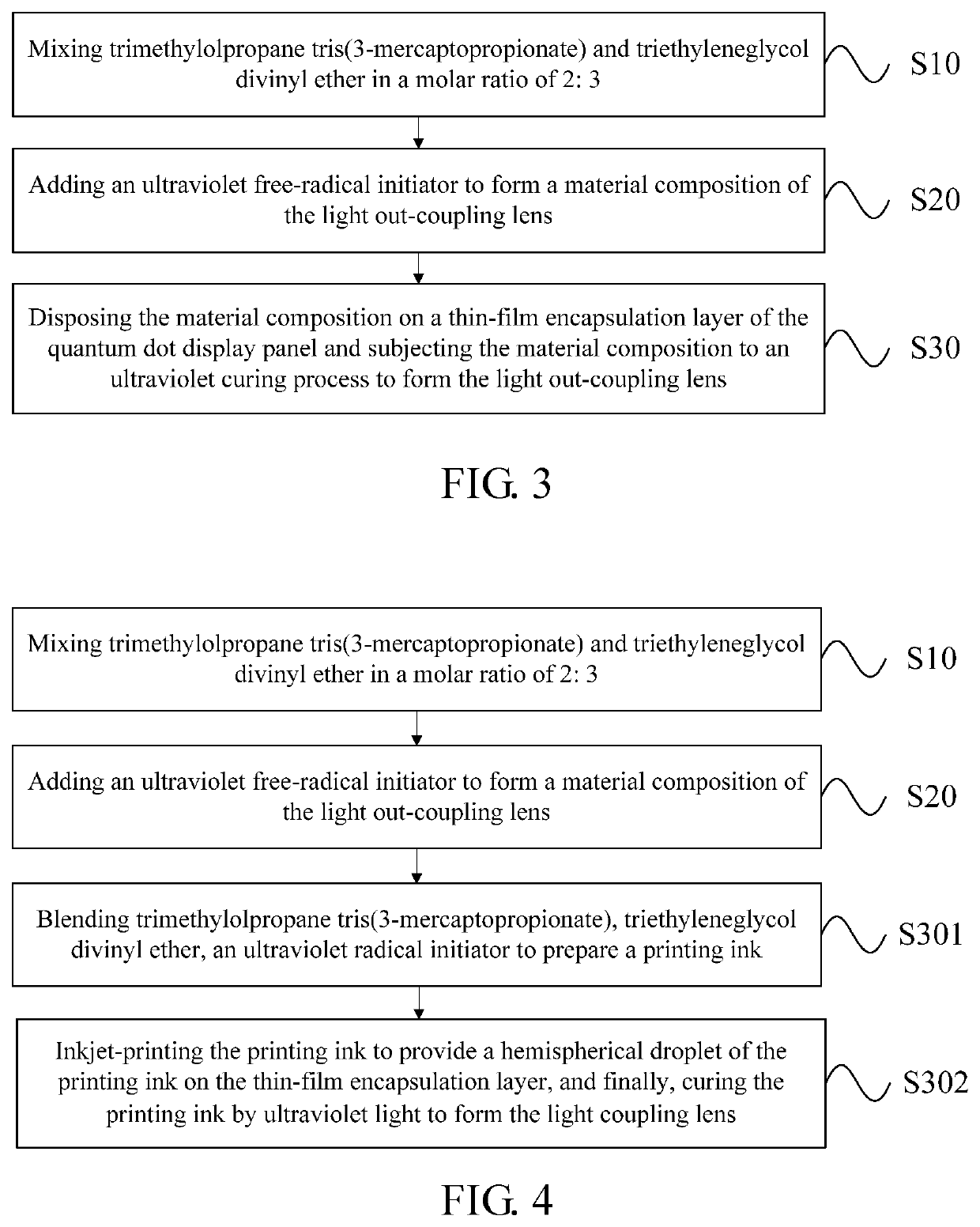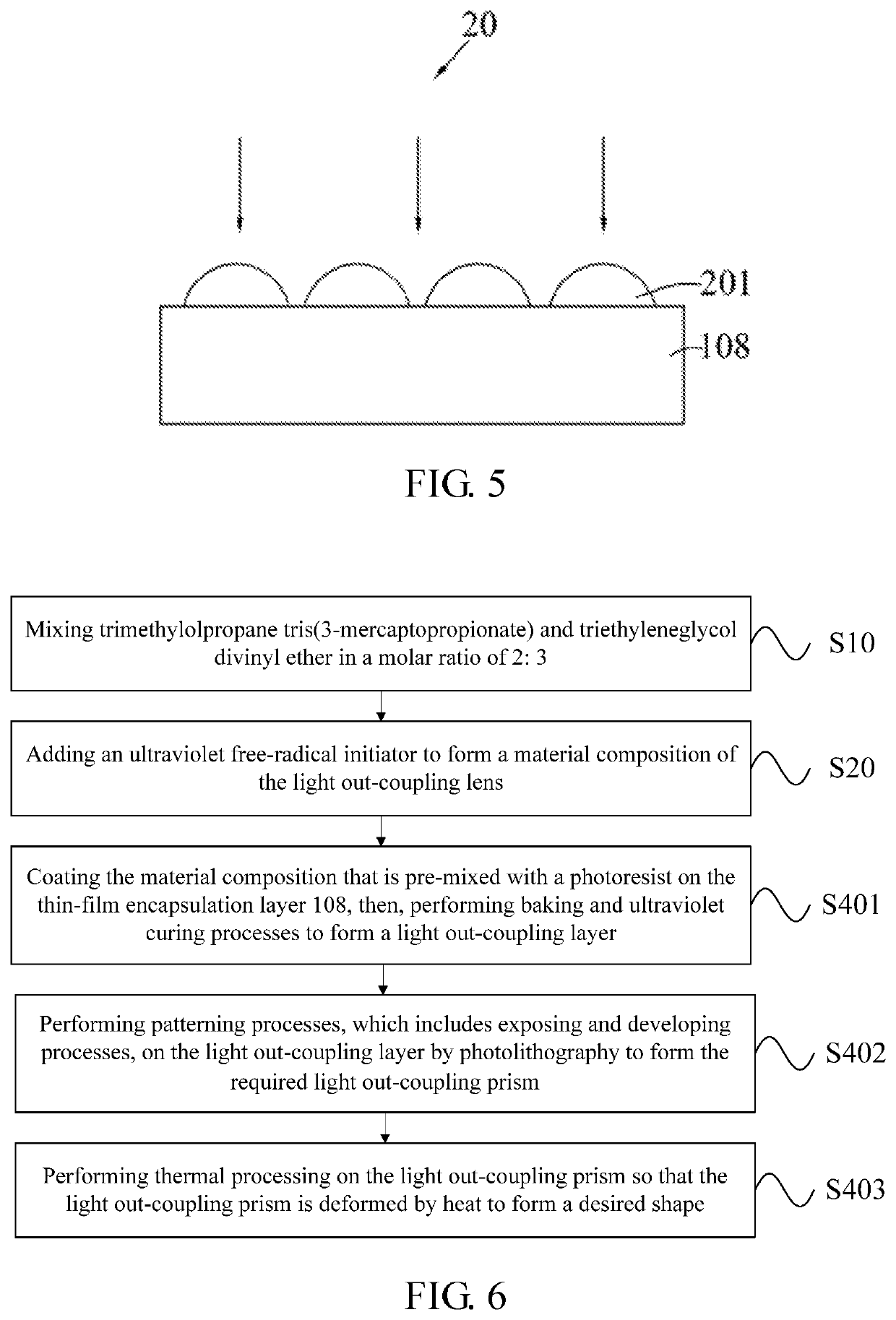Material composition and manufacturing method of light coupling lens for quantum dot display panel
- Summary
- Abstract
- Description
- Claims
- Application Information
AI Technical Summary
Benefits of technology
Problems solved by technology
Method used
Image
Examples
first embodiment
[0054]In the present disclosure, the quantum dot display panel 10 may further include a substrate 101, a thin-film transistor (TFT) array 102, a planarization layer 103, an anode 104, a pixel defining layer 105, an organic light-emitting diode (OLED) 106, a cathode 107, a thin-film encapsulation layer 108, a black matrix 110, and a cover plate 114 which are formed on the substrate 101 in sequence.
[0055]The material composition of the light out-coupling lens 201 includes trimethylolpropane tris(3-mercaptopropionate), triethyleneglycol divinyl ether, and an ultraviolet radical initiator. A molar ratio of trimethylolpropane tris(3-mercaptopropionate) to triethyleneglycol divinyl ether is 2:3. The material composition is cured by an ultraviolet light to form the light out-coupling lens.
[0056]Trimethylolpropane tris(3-mercaptopropionate) and triethyleneglycol divinyl ether can be obtained by any known manufacturing method or are commercially available.
[0057]The ultraviolet radical initia...
second embodiment
[0085]FIGS. 4-5 show the light out-coupling structure 20 of the present disclosure. The manufacturing method of the light out-coupling lens 201 includes printing (or transferring) on the thin-film encapsulation layer 108 to provide the light out-coupling composition. The manufacturing method of the light out-coupling lens 201 specifically includes:
[0086]a step S301 of blending trimethylolpropane tris(3-mercaptopropionate), triethyleneglycol divinyl ether, an ultraviolet radical initiator, (optionally) a plurality of quantum dots 204, 205 (see FIG. 2), and (optionally) a photoresist to prepare a printing ink; and
[0087]a step S302 of inkjet-printing the printing ink to provide a hemispherical droplet of the printing ink on the thin-film encapsulation layer 108, as shown in FIG. 5, and finally, curing the printing ink by ultraviolet light (arrow in FIG. 5) to form the light coupling lens 201. If a transferring process is employed, firstly, the printing ink is printed on a surface of a ...
third embodiment
[0089]FIGS. 7-9 show a light out-coupling structure 20 according to the present disclosure. The manufacturing method of the light out-coupling lens 201 includes forming an array of light out-coupling lenses on the thin-film encapsulation layer 108 after performing coating, drying, exposing, developing, heating (or by printing / transferring and curing) processes in sequence. The steps are specifically as follows:
[0090]a step S401 of coating the material composition that is pre-mixed with a photoresist and (optionally) a plurality of quantum dots 204, 205 (see FIG. 2) on the thin-film encapsulation layer 108, and, then, performing baking and ultraviolet curing processes to form a light out-coupling layer 200, as shown in FIG. 7. This step can be repeated 3 times to form light coupling output layers 200 containing red light-emitting quantum dots 204, green light-emitting quantum dots 205, without quantum dots 204, 205 at predetermined positions of the red, green, and blue sub-pixels.
[00...
PUM
| Property | Measurement | Unit |
|---|---|---|
| Temperature | aaaaa | aaaaa |
| Length | aaaaa | aaaaa |
| Length | aaaaa | aaaaa |
Abstract
Description
Claims
Application Information
 Login to View More
Login to View More - R&D
- Intellectual Property
- Life Sciences
- Materials
- Tech Scout
- Unparalleled Data Quality
- Higher Quality Content
- 60% Fewer Hallucinations
Browse by: Latest US Patents, China's latest patents, Technical Efficacy Thesaurus, Application Domain, Technology Topic, Popular Technical Reports.
© 2025 PatSnap. All rights reserved.Legal|Privacy policy|Modern Slavery Act Transparency Statement|Sitemap|About US| Contact US: help@patsnap.com



